#jack endino
Explore tagged Tumblr posts
Text
Screaming Trees-Winter Song (Acoustic)
youtube
Studio acoustic version of Winter Song from 1993, Jack Endino on slide guitar.
#screaming trees#winter song#mark lanegan#gary lee conner#van conner#barrett martin#jack endino#psychedelic rock#acid punk#sweet oblivion#1993#acoustic version#studio outtake#Youtube
17 notes
·
View notes
Text
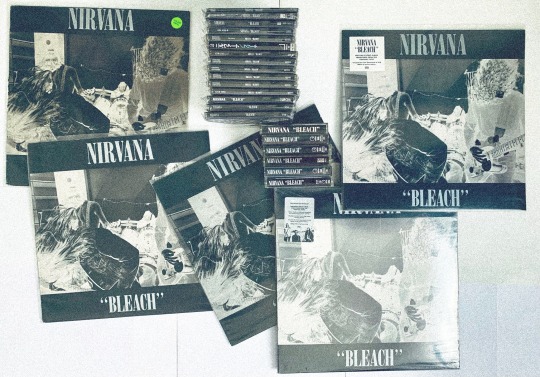
“BLEACH” came out on this day 35 years ago.
I have 26 different versions of this album right now.
#nirvana#bleach#kurt cobain#kurdt kobain#chris novoselic#krist novoselic#chad channing#dale crover#jack endino#sub pop#seattle#cobain#novoselic#endino#grunge#black and white#bw#blackandwhite#kurt donald cobain#sub pop records#kurt
26 notes
·
View notes
Text
Buy You by Bearaxe from the Last Call EP
#music#bearaxe#shaina shepherd#jack endino#nukkles tuitama#jon lemmon#matt williams (bearaxe)#SoundCloud
38 notes
·
View notes
Text

Skin Yard, 1991
scanned from 35mm slide
📸: Karen Mason
if you like my scans and want to help out you can do so here
8 notes
·
View notes
Video
youtube
Mark Lanegan - Mockingbirds
#youtube#mark lanegan#mockingbirds#the winding sheet#jack endino#mike johnson#mark pickerel#steve fisk#alternative rock#blues rock#indie rock#grunge#music#music is love#music is life#music is religion#raining music#rainingmusic
12 notes
·
View notes
Text
youtube
Soundgarden - "Entering"
#Soundgarden#Screaming Life#Hiro Yamamoto#Chris Cornell#Kim Thayil#Matt Cameron#Jack Endino#Sub Pop#Bruce Pavitt#Jonathan Poneman#Deep Six#Seattle#Grunge#Indie Rock#Heavy#Gothic#1980s#Music#Rock n' Roll#Youtube
3 notes
·
View notes
Text
youtube
The 90's rock-pop conundrum? Is this discussion even neccessary at this point, when poptimism won? We have to look back – the 90's alternative rock embraced pop, but you always had a hunch they felt wary of that. For instane, Nirvana became huge, because they brought some strong pop sensibilities to grunge. However, I assume they – Grohl may have been an outlier here –. didn't feel comfortable about that notion. The tune on the link, for instance, caused Cobain to ask himself – would anybody take him seriously afterwards? Mind you, the piece is not a frothy confection, yet I get his trepidation, this sounds like something for all radio, not just college ones. While Kurt Cobain may have been more open-minded than majority of his peers, rockism still clung on to his heart.
#Youtube#nirvana#bleach#about a girl#kurt cobain#krist novoselic#chad channing#jack endino#90's music#alternative rock
0 notes
Text

Hot Hot Heat- Makeup The Breakdown (Indie Rock, Post-Punk Revival, Dance-Punk) Released: October 8, 2002 [Sub Pop Records] Producer(s): Hot Hot Heat, Jack Endino
youtube
#indie rock#post-punk revival#dance-punk#2000s#2002#Hot Hot Heat#Sub Pop Records#Sub Pop#Jack Endino#Talk To Me Dance With Me#Makeup The Breakdown
0 notes
Text

Mudhoney “Touch Me I’m Sick/Sweet Young Thing Ain’t Sweet No More” 1989
The big bang that set off the grunge and alternative music revolution of the 90’s. Of course Mudhoney were more of a garage band than what we ultimately came to know what grunge was to be. But still, super important record. Without it the 90’s would’ve sounded very different.
The b-side is actually the better song in my opinion and the band’s original opinion as it was intended to be the a-side. Somebody, probably Jack Endino, said “No way!” and “Touch Me…” got the a-side.
#mudhoney#touch me I’m sick#mark arm#Steve turner#dan peters#Matt lukin#sub pop#1989#grunge#garage rock#fuzz#Spotify
7 notes
·
View notes
Text











Soundgarden - A-Sides.
Año 1997. Reedición USA. Año 2018. Grunge. Universal Music Enterprises.
Es el segundo álbum recopilatorio de la banda. Publicado el 4 de noviembre de 1997, por el sello A&M. Contiene canciones de Screaming Life, Ultramega OK, Louder Than Love, Badmotorfinger, Superunknown y Down On The Upside.
Sencillos: «Bleed Together».
Músicos Chris Cornell - voz, guitarra, mandolina y mandola. Kim Thayil - guitarra. Ben Shepherd - bajo, coros, mandolina y mandola. Hiro Yamamoto - bajo y coros. Matt Cameron - batería, coros y percusión.
Músico invitado Artis The Spoonman - spoons (C1).
Producción Jack Endino - productor. Drew Canulette - productor. Terry Date - productor. Michael Beinhorn - productor. Adam Kasper - productor. Soundgarden - productor.
Tracklist: A1 Nothing to say 3:58 A2 Flower 3:28 A3 Loud love 4:57 A4 Hands all over 6:02
B1 Get on the snake 3:45 B2 Jesus Christ pose 5:52 B3 Outshined 5:12 B4 Rusty cage 4:27
C1 Spoonman 4:08 C2 The day I tried to live 5:21 C3 Black hole sun 5:20 C4 Fell on black days 4:42
D1 Pretty noose 4:13 D2 Burden in my hand 4:52 D3 Blow up the outside world 5:47 D4 Ty Cobb 3:08 D5 Bleed together 3:51
#musiccollection#coleccióndemúsica#vinilos#viniloschile#viniloslp#sharemusic#compartirmúsica#lp#vinylrecords#grunge#altrock#soundgarden
12 notes
·
View notes
Text
The Gits — Enter: The Conquering Chicken/Seafish Louisville (Sub Pop)

The music zeitgeist rolled right over Mia Zapata and the Gits, barely stopping to glance at her eruptive mesh of metal riff and blues fluency, of punk urgency and classic rock swagger. Before and after Zapata’s run, women were meant to warble and coo, not howl in fiery triumph or roll notes on flame around in their mouths, so that they slithered and coiled and hissed out on the stage. It’s one of rock and roll’s great missed turns, her exit and subsequent disappearance, a path not taken, a path just about entirely forgotten.
Well, not so fast, says Sub Pop, a label with authority in the Pacific Northwest’s grunge-punk-rock evolution. They’re reissuing all four Gits albums, remastered by Jack Endino, and packaged with notes from Tim Sommer, the Atlantic A&R representative who might have pushed the Gits out into the mainstream if there had been more time for that.
Four albums, but let’s focus on two for now, the second full-length Enter: The Conquering Chicken from 1994 and Seafish Louisville, a compilation of demos, live cuts and alternate takes originally put out in 2000. You’ll have to read Jonathan Shaw for his take on the debut, Frenching the Bully, or the early recordings collected in Kings and Queens. We split up the bounty, two each, and as it happens, he got the prologue, while I took the post-mortem.
Enter: The Conquering Chicken would, quite possibly, have catapulted the Gits onto a wider stage, enlarging the full-throated blues rock aesthetic that the band had proposed on Frenching the Bully, going head-long and full-on in their celebration of drinking, comradeship and rock and roll. The Gits had already started on it in July of 1993, when Zapata, walking home from a club, was raped and murdered. The band finished it without her, but that was it for the Gits. They broke up soon after.
The tragedy at the end of the Gits story understandably cast a shadow over the bands’ output. It was hard to listen to the music just as it was, without the backstory. But now, more than three decades later, it feels possible to consider these songs as songs, finally, and holy hell, do they rock. Here’s the monster-riffed “Seaweed,” lumbering over an insurgent rhythm, Zapata in middle of it, her voice fluttering and confiding, then erupting in an all-consuming belt. The interplay of bass and guitar is more like Van Halen than anything punk, just gigantically sized, clean and propulsive. Looking to pogo? Try “Drunks” with its manic one-two punch, its thundering speed, its rockabilly flourishes, its all hands shout of the title. “Precious Blood,” by contrast, is all slouchy, in the pocket blues, Zapata not forcing anything, letting the melody roll and flow, as the noise builds in around her. She’s in the same mode on her riff on Sam Cooke’s “Change Is Going to Come,” letting the big notes shudder and blossom with vibrato, snaking the melody around massive metal guitar blasts. And though it’s impossible to pigeonhole Zapata or the band she fronts by genre, it is also instantly clear who they are, seconds into any song, regardless of style or tempo.
The disc closes on a disturbing note, with a track — “Song of the Crab” — that seems to foreshadow Zapata’s untimely end. Against a firestorm of metal-adjacent guitar work, Zapata howls, “Never ceases to amaze me the things you’ll try to pull/Anything to get me in and then get me killed/Go ahead and slash me up spread me all across this town/‘Cause you know you’re the one that won’t be found.” Chilling.
If Enter: The Conquering Chicken marks the natural end of the Gits trajectory, Seafish Louisville comes seven years after the fact. It collects 16 previously unreleased tracks, ten of them live sessions at the RCKCNDY club, a Seattle punk mainstay that closed in 1999. And yet, while the comp is archival, it does a lot to bring the Gits into the here and now. A scorching version of the Gits signature “Another Shot of Whiskey,” a manic take on “A” at unhinged speed, a thundering, blistered romp through “Slaughter of Bruce” — here’s a record that puts you right up against the stage within spitting distance in an eternal hard-rocking present. Seafish also makes the case that whatever you think you know about the Gits, there’s more to discover. A previously unknown cut, “Whirlwind” thrashes and rages at the beginning of the track listening.
Gits revivals recur at intervals. I first encountered the band during a previous one, around the release of the 2005 documentary The Gits. But both then and now, what struck me hardest was how astonishing it was that music this powerful could happen and disappear and fail to move the dialogue. Maybe this time, it will be different? Probably not. But that doesn’t mean you shouldn’t hear this, if you haven’t, or that you can’t profit from revisiting it if you have.
Jennifer Kelly
#the gits#enter the conquering chicken#seafish louisville#sub pop#jennifer kelly#albumreview#dusted magazine#mia zapata#grunge#blues#punk#seattle
6 notes
·
View notes
Text

january 23, 1988
Seattle producer Jack Endino oversees the first recording session of an unknown, unnamed grunge band soon to be called Nirvana. The session takes place at Reciprocal Recording, where many of the genre's pioneers - including Soundgarden, Mudhoney, and Green River - cut their seminal albums. Nirvana returns to the studio a few months later to work on their debut album, Bleach.
4 notes
·
View notes
Text
In The Rock 1/23/1988: Nirvana record a 10 track demo with producer Jack Endino at Reciprocal Studio. Jonathan Poneman hears it, and soon signs the band to Sub Pop records with a handshake. @Nirvana #JackEndino #SubPop #RockHonorRoll

3 notes
·
View notes
Text
REHAB DOLL TURNS 35!


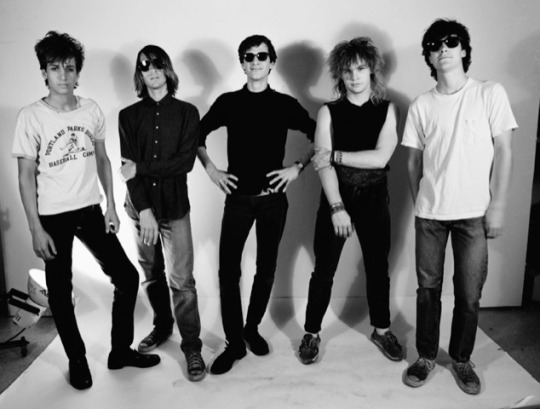
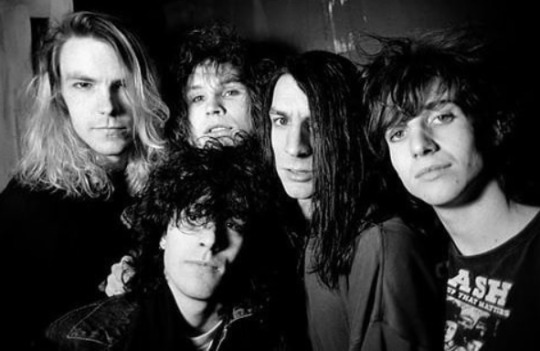
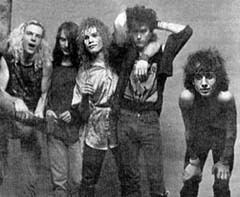
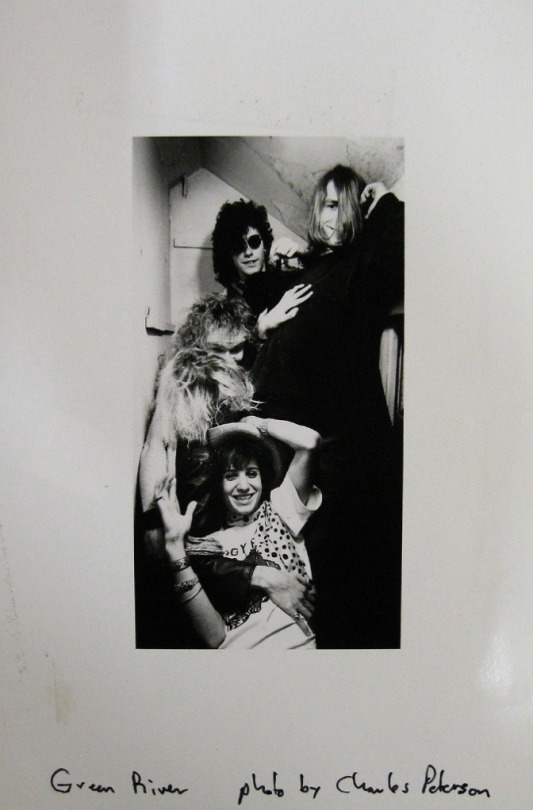
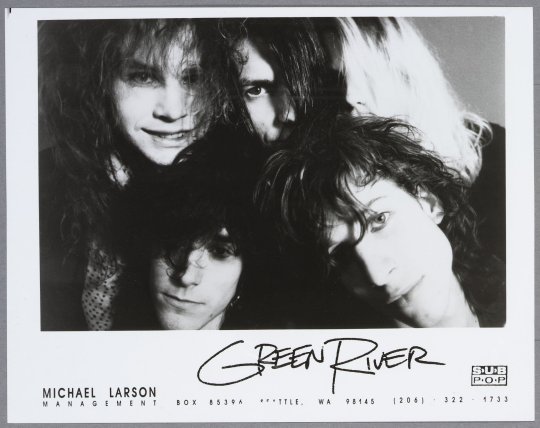


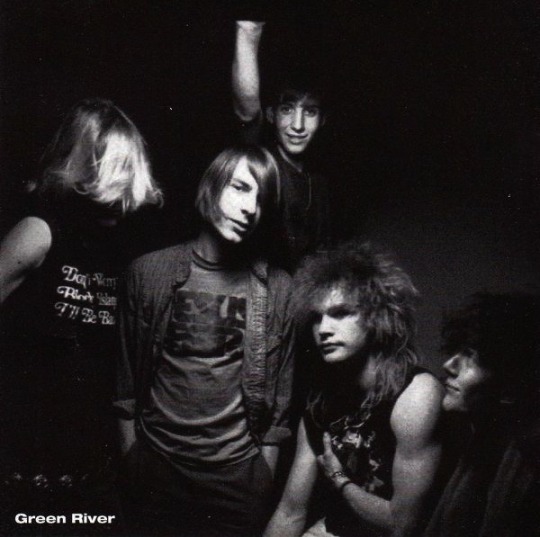
The story of Seattle’s rise to global rock supremacy in the late ’80s and early ’90s begins with Green River. Made up of Jeff Ament (bass), Mark Arm (guitar/vocals), Bruce Fairweather (guitar), Stone Gossard (guitar), and Alex Shumway (drums), the quintet put out three 12”s and a 7” single during its brief existence. Green River’s influence on Seattle’s music scene spread far and wide thanks to the members’ dispersion into bands including Pearl Jam, Mudhoney, and Love Battery, as well as the punk-glam-sludge-rock songs they left behind.
“By ‘83, ‘84, there was definitely a movement that was happening within hardcore, like Black Flag slowing down for My War,” says Arm. “The Replacements and Butthole Surfers were rearing their heads, and they’re very different bands, but they’re not hardcore—the Replacements are pretty much straight-up rock, and Butthole Surfers were God knows what. Sonic Youth’s Bad Moon Rising was around, and a lot of really interesting post-hardcore things were happening.”
Green River, which formed in 1984, was part of that evolution, with a sound that straddled a lot of different genres—blues, punk, bloozy straight-ahead rock. The mini-LP Dry As A Bone, which came out in 1987, and the band’s lone full-length Rehab Doll, which came out in 1988, were released as a single CD with a few bonus cuts, including their sneering cover of David Bowie’s “Queen Bitch” and their marauding version of Dead Boys’ “Ain’t Nothin’ to Do,” in 1990—but they’ve been unavailable on vinyl for years. Now, these slices of Seattle music history are not only back in print, they’re accompanied by items from the vaults that had been forgotten about for decades.
Dry As A Bone was recorded at Jack Endino’s Reciprocal Recording in 1986, and it shows the band in furious form, with Arm’s yowl battling Fairweather and Gossard’s ferocious guitar playing on “This Town” and “Unwind” opening as a slow bluesy grind then jump-starting itself into a hyperactive chase. The deluxe edition includes Green River’s cuts from the crucial Seattle-scene compilation Deep Six, as well as long-lost songs that were recorded to the now-archaic format Betamax.
Rehab Doll, recorded largely at Seattle’s Steve Lawson Studios., bridges the gap between the taut, punky energy of Dry As a Bone and the bigger drums and thicker riffs that were coming to dominate rock in the late ’80s. This new edition of Rehab Doll includes a version of “Swallow My Pride” recorded to 8-track at Endino’s Reciprocal Recording, which features a more accurate depiction of how the band sounded when they played live. “When I listen to these mixes, I think, ‘This is how we actually sounded—this is the kind of energy we had,’” says Shumway.
Green River’s place in American music history is without question, but these recordings paint a more complete picture of the band—and of rock in the mid- to late-’80s, when punk’s faster-and-louder ideals had begun shape-shifting into other ideas.
#stone gossard#jeff ament#mark arm#steve turner#bruce fairweather#subpop#Rehab Doll#green river#mother love bone#pearl jam#mudhoney#seattle#35th anniversary#Alex Shumway#swallow my pride#steve lawson
52 notes
·
View notes
Text
Albuquerque’s BLUE HERON Reveals Gnarly New Music Video “Dinosaur”
~Doomed & Stoned Debuts~
By Billy Goate

Get ready for gritty heavy rock from Albuquerque with a new album from BLUE HERON. Raspy, terrifying roars meet brooding, turbulent low end. "Dinosaur," the band's latest music video, comes midway through the new 9-tracker, 'Everything Fades' (2024), their second full-length, which is just about as down to earth as you could ask for.
"Dinosaur" begins ominously with a dank, questioning riff that leads into a mysterious cool-of-the-morning desert-stoner metal groove, with bittersweet bluesy touches throughout the song. Jadd Shickler's vocals are reminiscent of those epic early High on Fire tracks, somewhat cleaner than Matt Pike's singing approach but no less gravelly and fearsome. Meanwhile Mike Chavez on guitar and Steve Schmidlapp on bass rustle up a storm of gut splitting heft, driven by a fierce and determined rhythm from drummer Ricardo Sanchez.
Towards the 4 minute mark things get slow and doomy like the steady advance of pregnant rain clouds draping across the sky, perhaps an omen of whatever great and mysterious calamity befell the alpha predator's of planet earth's past (and a warning that we too may go the way of the dinosaurs).
Blue Heron's Everything Fades is rooted in the mood and verve of the High Desert. The band's sound on this record has a tangible feeling of mass, weight, and depth. It comes out on September 27th on Blues Funeral Recordings and can be pre-ordered on vinyl, compact disc, and digital formats right here. Stick it on a playlist with High on Fire, Egypt, Lamassu, Forming The Void, and Red Messa.
Give ear...
youtube
SOME BUZZ
Blue Heron expand on their unyielding desert sound with a new slab of propulsive, sun-scorched riff-heaviness. 'Everything Fades' (2024) finds the band reveling in low-tuned roil and amplifier hum, churning out swerving grooves as if the primordial spirit of the desert itself compels them.
Balanced between laid-back, meditative atmospherics and heavier, more aggressive lunges, Blue Heron’s cruising jams and gritty stoner romps call to mind echoes of Kyuss, Clutch and Monster Magnet, as well as modern contemporaries Valley of the Sun and Greenleaf.
Full of rhythmic intensity, sledgehammer riffing and vocals ranging from clean and moody to howling and raw, 'Everything Fades' covers a wide expanse of musical ground that shows how familiar influences can always be molded into inventive, exciting new forms.
Surrounded by endless horizons, Blue Heron formed in 2018 out of a compulsion to fill the vastness with massive volume, saturating their piece of desert with rolling, thunderous riffs, drums that pummel and swing, deep, thrumming tones and vocals that rip and roar.
Everything Fades by Blue Heron
Blue Heron’s guitarist and singer were founding members of Spiritu, possibly Albuquerque, New Mexico's first desert rock band, whose brief burn in the early aughts included a Jack Endino-produced LP, a European tour with Clutch, Spiritual Beggars and Dozer, and a compilation appearance alongside Entombed and Mastodon.
Their debut LP "Ephemeral" arrived in May of 2022 via Kozmik Artifactz in Europe and Seeing Red Records in the USA. Substantial appreciation in the underground led to performances at Ripplefest Texas and Monolith on the Mesa and opening slots for The Well, Elder, Black Mountain, Ruby the Hatchet, Howling Giant, Heavy Temple and The Obsessed, along with a swath of positive reviews throughout the heavy media.

Follow The Band
Get Their Music
#D&S Debuts#Blue Heron#Albuquerque#New Mexico#heavy rock#doom metal#Blues Funeral Recordings#D&S Reviews#Doomed and Stoned
2 notes
·
View notes
Text
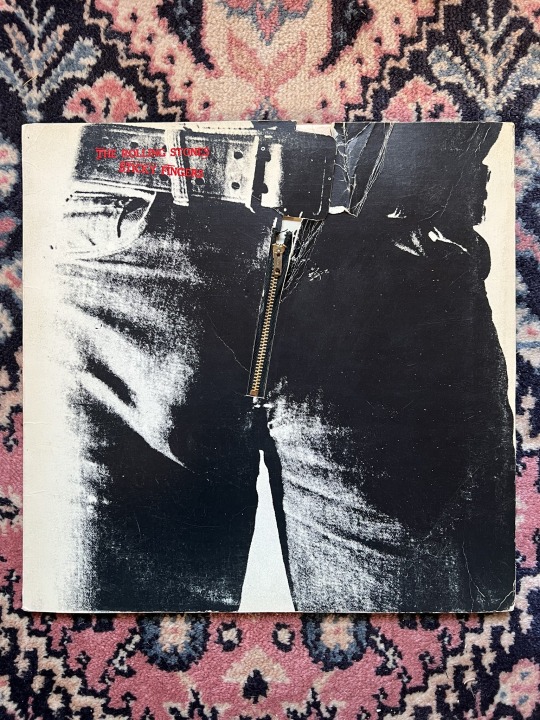
Every Record I Own - Day 800: The Rolling Stones Sticky Fingers
There's a bar in Greenpoint, Brooklyn called Moonlight Mile that my husband and I went to all the time back when we lived in New York. It was just a block or two off of the East River, so we would often walk to a nearby park to watch the sun set over Manhattan then head to the bar for a drink or two. It was a mellow neighborhood spot with a well-curated free jukebox. I felt like a bit of a dork for it, but I put on "Moonlight Mile" off of Sticky Fingers pretty much every time I went in there. Maybe it was a bit too on-the-nose, but fuck it... it's exactly the kind of song I wanna listen to with a beer in my hand as the night creeps in.
Like Let It Bleed, I picked up this cheap copy of Sticky Fingers at some point in the '00s because it's considered to be one of the Stones' best albums (if not THE best). And like Let It Bleed, I wasn't all that enamored with it at first. Sure, I knew the hits off the album. "Brown Sugar" is a classic rock staple (and a frequent topic of discussion when it comes to the more problematic aspects of the band) and "Wild Horses" is great (thanks in large part to involvement of Gram Parsons), but there wasn't much else that leapt out at me. It just sounds like the stereotypical sleazy, bluesy sound I associate with '70s classic rock.
But individual songs began to grow on me. First it was "Dead Flowers"---a defiant country tune that drops a very unsubtle heroin reference in the second verse ("I'll be in my basement room / with a needle and a spoon"). Combined with the slavery and sadism references in "Brown Sugar" and the cock bulge on the album cover, I'm surprised Sticky Fingers wasn't the subject of a massive boycott. How was this considered mainstream material back in 1971?
The slow-burn ballad "Moonlight Mile" was the next song to win me over. For years, I'd play "Dead Flowers" and "Moonlight Mile"---the closers to the album---while I was showering in hotel rooms on tour. They were the perfect length and the ideal way to gauge how much time I was taking getting ready in the bathroom while one of my bandmates waited for their turn to shower.
Other songs started luring me in: the primary riff of "Bitch," the dueling guitar line verses and gospel chorus of "Can't You Hear Me Knocking," the wistful soul of "Sway" and "I Got the Blues"... it's as if something else grew on me with every listen.
That might explain why initial reviews of Sticky Fingers were mixed while the album is now considered to be one of the greatest rock records of all time. Stones records aren't immediately rewarding. They're loose and unrefined. They aren't burnished to shine. Instead, they sound like fleeting moments. More than one studio engineer mentioned that the Stones seemed like they were barely a functional band when they were writing and formulating songs together in the studio, and then at some point they would all lock in and magic would happen.
Many years ago, an old band of mine recorded with Jack Endino, the engineer behind a bunch of quintessential grunge albums. Jack didn't care much about fixing our minor flubs. "People still love Rolling Stones albums," he argued, "and those performances were sloppy as hell." His reasoning was that the small imperfections in a song---the slightly flat notes, the fluctuations in tempo, the not-quite-together accents---kept the brain intrigued. Even if the listener isn't 100% aware of the errors, the subconscious keeps trying to make sense of the flaws, and that keeps the music interesting.
There's so much music out there vying for our attention these days, and it could be very easy to give Sticky Fingers a cursory listen and shrug it off. But how many albums somehow manage to get better with every listen? Maybe it's the slop factor. Maybe it's the quality songs glimmering in the dirt like diamonds in the rough.
Whatever it is, I love Sticky Fingers a little more every time I listen to it. And I still throw "Moonlight Mile" on the jukebox when I'm in NYC and visiting my old neighborhood bar in Greenpoint.
11 notes
·
View notes